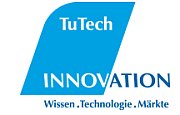Only articles in with the "RSS" tag are displayed
To display all articles click
here.
 |
27. August 2009 – 13:02 by Bengt Feil (TuTech Innovation GmbH)
|
 Real-time or instant communication is one of the major trends of the internet today: Facebook-Chat offers real-time communication, exchanges of thoughts and information happens almost instantly on Twitter, push email on desktop and mobile devices is quickly developing into a standard and instant messaging via standards like Jabber or software like Skype has become an important tools for private and professional communication. eParticipation can benefit from this development as it opens up a door for a new generation of tools and services. But one major component is still missing on the way to the real-time web.
Real-time or instant communication is one of the major trends of the internet today: Facebook-Chat offers real-time communication, exchanges of thoughts and information happens almost instantly on Twitter, push email on desktop and mobile devices is quickly developing into a standard and instant messaging via standards like Jabber or software like Skype has become an important tools for private and professional communication. eParticipation can benefit from this development as it opens up a door for a new generation of tools and services. But one major component is still missing on the way to the real-time web.
In a nutshell the instant updating is achieved by setting up a hub-server which acts as an intermediate and keeps track of all updates on RSS-feeds and quickly informs all subscribers. A quick introduction to the technical basis is given in the following presentation:
In summary the very simple implementation of this standard would allow all kinds of websites to exchange various sorts of content instantly. It is like changing setting up phone lines between different islands instant of using ships transporting paper mail. Consequently pubsubhubbub (despite having a rather silly name) could be a major building block of the real-time web.
The next generation of eParticipation tools which make use of the real-time web and its underlining technologies could be more distributed and can engage the participants where ever they are on the web without being totally depended on third party platforms like Facebook etc.. One example could be to integrate discussions on Twitter etc. on a given topic to an eParticipation site and to use instant updating RSS to have both discussions linked to one another.
To get more information about this project or to try out what can be done with it I would suggest taking a look at the project page or this short tutorial of how to implement it.
Posted in Tools, Trends, Visions | 1 Comment »
 |
20. April 2009 – 13:44 by Danish Technological Institute
|
by Morten Meyerhoff Nielsen, Danish Technological Institute
Much has been reported about the successful campaigning, fund raising and support canvassing by the 2008 Obama election campaign. Still the use of ICT to increase electoral participation, campaigning, consultation and voting is not a uniquely US phenomena. A multitude of eParticipation and eDemocracy initiatives exist. Ranging from eVoting in Estonia’s and Geneva’s national and regional elections, gender budgeting in Freiburg, consultation on local issues in Malmö to the political influence of bloggers in China or in the 2008 election crisis in Kenya. Information communication technology (ICT) in other words plays an increasingly important role in society.
As South Africans go to the polling stations on 22 April 2009, campaigning is being played out in traditional media (TV, radio, print), on the internet, on YouTube, Facebook, Twitter, in text messages/sms’s with street banners and in rallies across the country.
A full 173 parties – 134 at national level plus 39 purely provincial parties – are officially registered for the 2009 elections. Of these the four main ones are (alphabetic order):
-
ANC - African National Congress and currently in power with the support, in a tripartite alliance, of the smaller South African Communist Party (SACP) and the Congress of South African Trade Unions (COSATU)
-
COPE – Congress of the People in 2008 by formed members of the ANC
-
DA – Democratic Alliance and currently the official opposition
-
IFP – Inkatha Freedom Party a mainly regional party centered on the province of KwaZulu-Natal
Each of the main parties makes use of ICT in some form and in variety of ways and degrees. The table below outlines the use of websites and social networks (or Web2.0 technologies). Read the rest of this entry »
Posted in News, Tools, Trends, Visions | 5 Comments »
 |
9. December 2008 – 17:16 by Rolf Luehrs
|

Most of you are familiar with the concept of RSS-Feeds, which enable you to collect/check new content of different websites without visiting them.
All you have to do is to put the feed’s web address (URL) in your feed reader. There are lots of different RSS reader available either as plug-in for your browser (Firefox, MS Explorer etc.) or web based like e.g. google reader.
Beyond the readers there are lots of different feed aggregators, allowing you to display and remix different RSS feeds on one or more screens. One example is netvibes. Other services allow you to build a community around the feeds, where members can additionally rate the feeds, comment on it, or post messages, like e.g. friendfeed. Read the rest of this entry »
Posted in Uncategorized | 3 Comments »
Real-time or instant communication is one of the major trends of the internet today: Facebook-Chat offers real-time communication, exchanges of thoughts and information happens almost instantly on Twitter, push email on desktop and mobile devices is quickly developing into a standard and instant messaging via standards like Jabber or software like Skype has become an important tools for private and professional communication. eParticipation can benefit from this development as it opens up a door for a new generation of tools and services. But one major component is still missing on the way to the real-time web.










